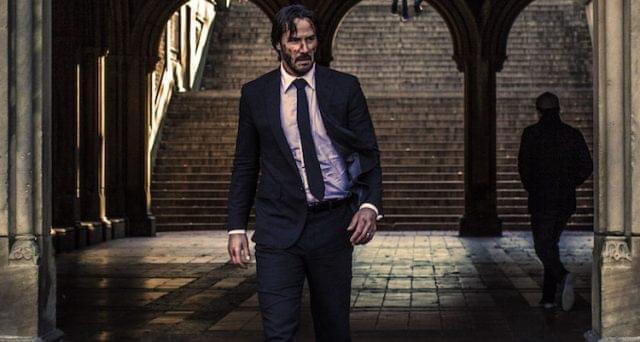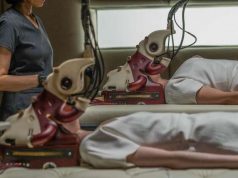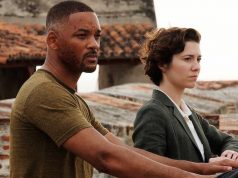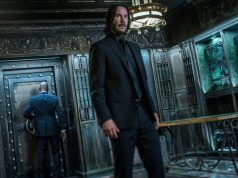
When last we saw John Wick, at the end of his out-of-nowhere 2014 cult hit, the grudgingly reactivated assassin had avenged, with extreme prejudice, the murder of his dog and the theft of his car and was ready to enjoy retirement again. Alas, it was not to be. There were too many unresolved issues — not about the story, which was satisfyingly concluded (but which the sequel seeks to extend anyway), but about the world the story took place in. With its codes of conduct and special currency and unseen hierarchy, “John Wick” was more than an ordinary shoot-’em-up.
So is “John Wick: Chapter 2,” the bigger, longer, not-quite-as-good follow-up. Again directed by Chad Stahelski and written by Derek Kolstad, the sequel spends its first 20 minutes doing something highly entertaining but completely unnecessary: sending John Wick (Keanu Reeves) to get his beloved car (which we’d assumed was destroyed) from the surviving member of the Russian crime family he slaughtered last time. Uncle Abram is played by Peter Stormare with the same crazy energy as his predecessors, and the league of taxi-driving goons he dispatches to stop Wick are mowed down with the same crunching, relentless fervor. Wick and the goons use their cars as weapons (I don’t know that I’ve seen a movie in which more people are intentionally struck by vehicles), along with their fists, feet, and guns. It’s marvelous.
Once we’re done re-tying old threads, the movie gets to its new story, set not many days later. An old colleague of John’s, suave Italian museum curator/hitman Santino D’Antonio (Riccardo Scamarcio), comes a-callin’ with a marker. Seems John owes him a debt (a “blood oath”!) from before, and while Santino let it go when John retired, now that he’s back in the game, well, it’s time to collect. John refuses the job; Santino takes retaliatory measures (don’t worry, John’s new dog is safe); things escalate pretty quickly from there.
John Wick’s new assignment takes him to Rome, where there is a local version of the Continental Hotel for assassins, governed by the same bylaws as the one in New York. (Back in NYC, the desk clerk played by Lance Reddick and the manager played by Ian McShane still fill important roles.) Kolstad and Stahelski revel in the opportunity to expand the universe they created, adding details about the mercenaries’ governing body (the High Table) and its politics, introducing us to other key figures (including one played by Laurence Fishburne), and providing tantalizing glimpses into the day-to-day operations of this mysterious underworld organization. (There’s a whole separate story to be told about the tattooed women in matching sleeveless blouses who operate the old-fashioned switchboards and send out word of new murder-for-hire contracts.)
As compelling as that is, the film slows down considerably in its middle section, action-wise. There’s a repetitive sequence of John shooting bad guys in the catacombs that feels interminable. Things pick up again after that, but the damage is done. We knew as soon as we met Santino that the final conflict would be between him and Wick. The movie should have condensed the Rome business and gotten to that point sooner.
Because there is much for fans of well-choreographed fights and stunt work to enjoy here! Santino is a dud of a villain, but Wick gets another opponent, a fellow hitman named Cassian (rapper-actor Common), who’s worthy of him. Their grappling gives the final section of the film new life, bolstered by the intriguing new information about their professional guild that we absorb. Reeves, still fearsomely agile and adroitly deadpan at 52, is a perfect fit for the material: adorned in cleverness, yet ultimately basically very simple. Chapter 3 would do well to remember simplicity; otherwise, there’s nothing John Wick needs to do differently from what he’s been doing, except maybe get some rest.
B- (2 hrs., 2 min.; )





